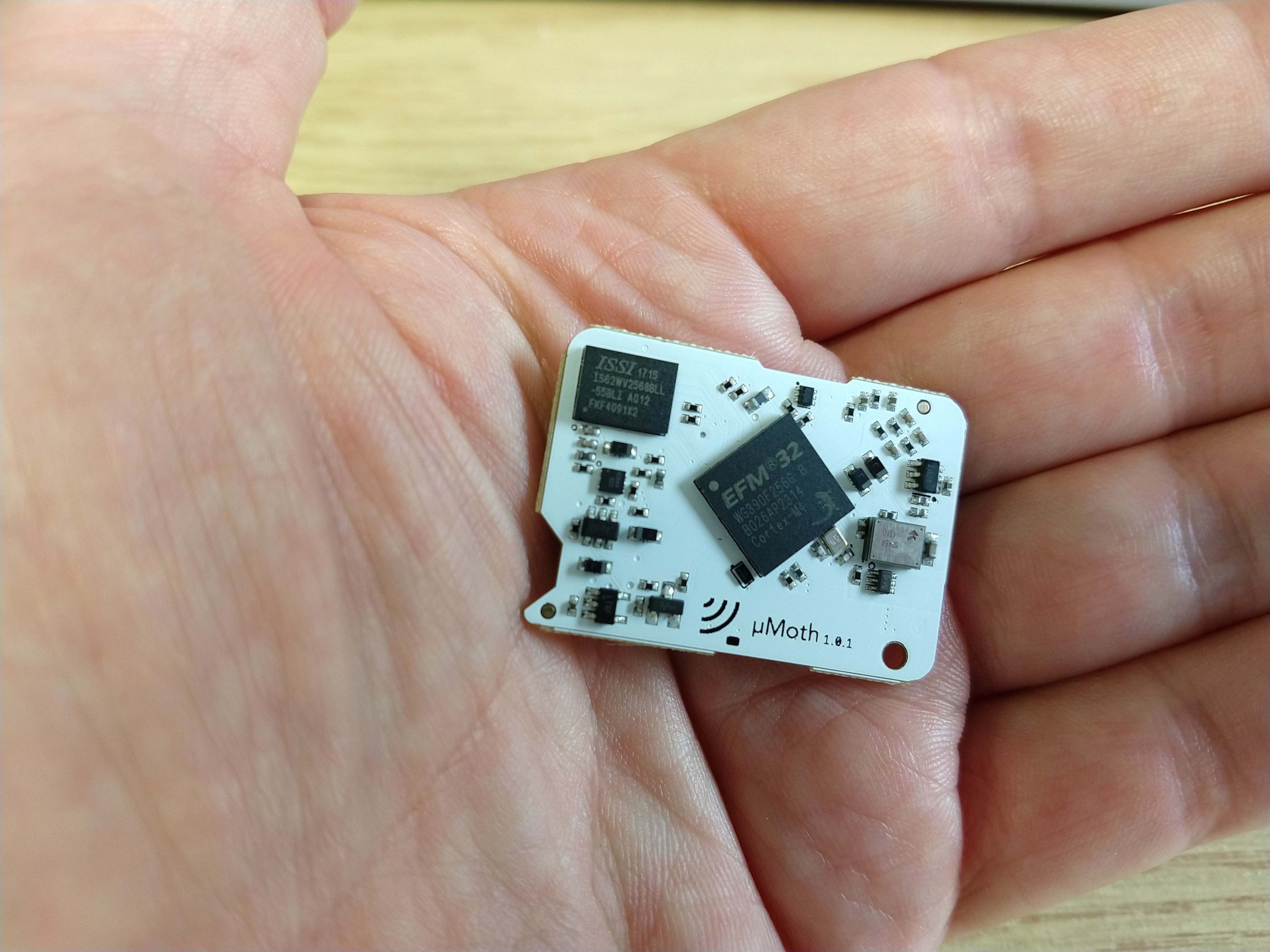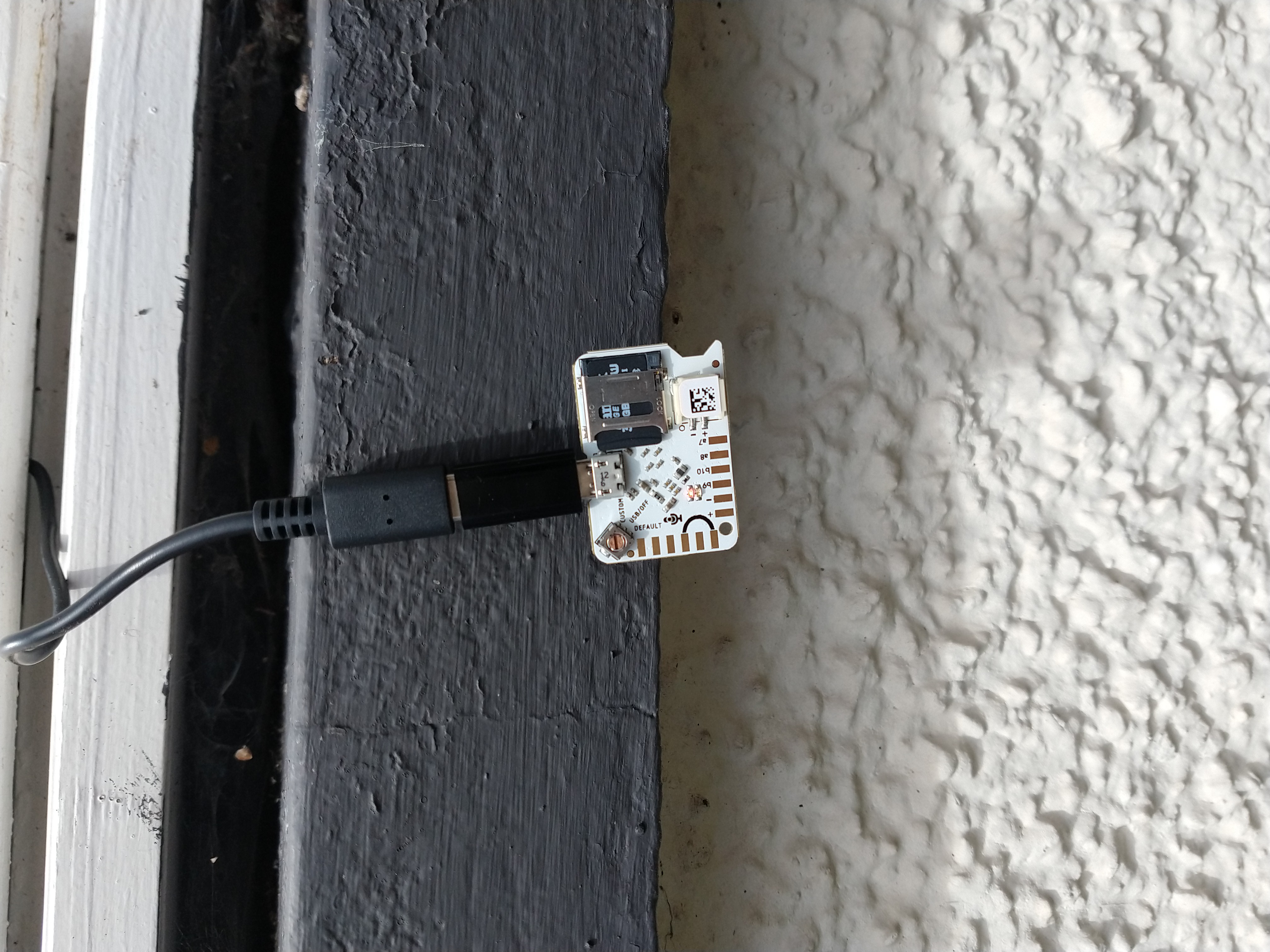Deploying a MicroMoth
The MicroMoth (or uMoth) from is the same as their better-known AudioMoth recorder but with a significantly smaller footprint. It’s just a traditional recorder or data-logger, with now on-board analysis and no wireless connectivity. I got hold of some to use in a larger project we’re thinking about running, and they’re not kidding about the “micro” part.

The uMoth uses the same software as the AudioMoth, and therefore
the same configuration app available from the apps page – for
64-bit Linux in my case. It downloads as a .appimage file, which
is simply a self-contained archive. It needed to be marked as
executable, and then ran directly from a double-click. (The page
suggests that there may be some extra steps for some Linux
distros: there weren’t for Arch.)
I then followed the configuration guide. The time is set automatically from the computer’s clock when you configure the device.
For testing I chose two recording periods, 0400–0800 and 1400–1600.

As shown this will, with the default 48KHz sampling, generate about 2GB of data per day and use about 70mAh of energy. For my tests I just hung the device out of the window on a USB tether for power: it works fine drawing power from the USB rather than from the battery connector.

This turned out not to record anything, because the time is lost if the power is disconnected, even though the configuration is retained. (The manual does actually say this, with a suitably close reading. It could be clearer.) There’s a smartphone app that can reset the time once the device is in the field and powered-up, though, by making an audio chime that encodes the current time and location in a way the board can understand. Flashing the device with the “Always require acoustic chime on switching to CUSTOM” makes it wait after power is applied until its time is set.
The red LED flashes when the device is recording. The green LED flashes when the device is waiting for a recording period to start. The red LED stays lit while the time is unset.